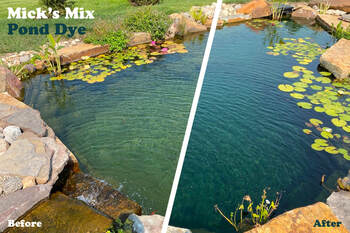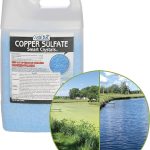Swimming in a pond can be a fun and refreshing experience, but it’s important to ensure that the water is clean and safe for swimming. Keeping a pond clean for swimming requires regular maintenance and proper care to prevent the growth of algae and harmful bacteria. In this article, we will discuss some effective methods to keep your pond clean and suitable for swimming.
1. Install a Pond Filtration System
One of the most effective ways to keep a pond clean for swimming is to install a pond filtration system. A filtration system helps to remove debris, algae, and other contaminants from the water, keeping it clean and clear. There are various types of filtration systems available, including mechanical filters, biological filters, and UV clarifiers. Choose a system that is suitable for the size of your pond and ensure that it is properly maintained.
2. Regularly Skim the Surface of the Water
Another important step in keeping a pond clean for swimming is to regularly skim the surface of the water to remove leaves, twigs, and other debris. Use a skimmer net to skim the surface of the pond and remove any floating debris. This will help prevent the accumulation of organic matter in the water, which can lead to algae growth and poor water quality.
3. Maintain Proper Water Circulation
Proper water circulation is essential for keeping a pond clean and healthy. Stagnant water can become a breeding ground for algae and bacteria, leading to cloudy and unsanitary conditions. Install a water pump or fountain to ensure that the water in your pond is circulating properly. This will help oxygenate the water and prevent the buildup of harmful substances.

Credit: www.totalhabitat.com
4. Use Beneficial Bacteria
Beneficial bacteria are a natural way to keep a pond clean and balanced. These bacteria help to break down organic matter, such as leaves and fish waste, reducing the nutrient levels in the water that can fuel algae growth. You can introduce beneficial bacteria to your pond by using specially formulated products that are safe for fish and other aquatic life.
5. Monitor Water Quality
Regularly monitoring the water quality of your pond is crucial for ensuring that it remains clean and safe for swimming. Test the water for pH levels, ammonia, nitrites, and nitrates to ensure that they are within the appropriate range for swimming. If you notice any imbalances or irregularities, take corrective action promptly to maintain good water quality.
6. Control Algae Growth
Algae can quickly take over a pond if left unchecked, turning the water green and murky. To control algae growth, use algaecides or natural treatments to keep the algae in check. Additionally, avoid overfeeding fish and provide adequate shade to prevent excessive sunlight from promoting algae growth. Regular maintenance and proper care can help keep algae under control.
7. Remove Dead Plants and Fish
Dead plants and fish can release harmful substances into the water, impacting water quality and creating unsanitary conditions. Remove any dead plants or fish from your pond as soon as possible to prevent contamination. Regularly inspect your pond for any signs of dead plants or fish and remove them promptly to maintain a clean and healthy environment.
8. Keep Wildlife in Check
Wildlife, such as ducks and geese, can introduce contaminants into your pond that can affect water quality. To keep wildlife in check, use deterrents such as decoys, fencing, or netting to prevent them from accessing the water. By minimizing wildlife presence, you can help maintain a clean and safe environment for swimming.

Credit: www.gartenart.co.uk
9. Regularly Clean Pond Equipment
Proper maintenance of pond equipment is essential for keeping your pond clean and functioning properly. Regularly clean filters, pumps, and other equipment to ensure that they are free from debris and operating efficiently. Inspect the equipment for any signs of damage or wear and address any issues promptly to prevent water quality problems.
10. Perform Regular Water Changes
Performing regular water changes is an important part of pond maintenance to keep the water clean and fresh. Partial water changes help to dilute contaminants and refresh the water, promoting a healthy environment for swimming. Monitor water levels and perform water changes as needed to maintain optimal water quality in your pond.
By following these tips and maintaining a regular cleaning and maintenance routine, you can keep your pond clean and safe for swimming. Enjoy a refreshing swim in your pond knowing that the water is clean, clear, and free from harmful contaminants. Take care of your pond, and it will provide you with hours of swimming enjoyment for years to come.





